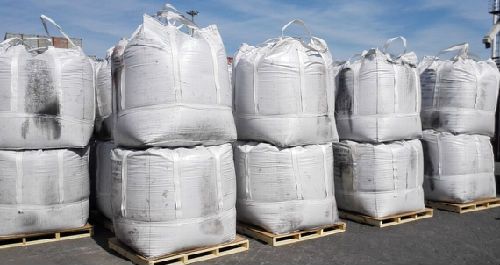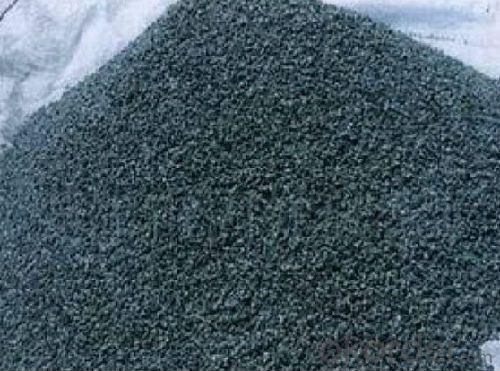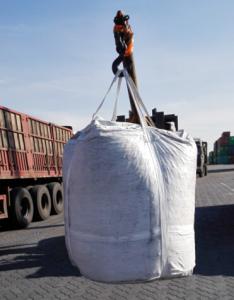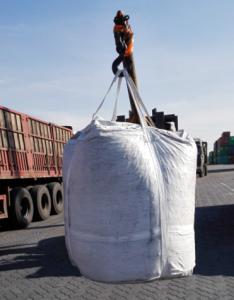Fuel Grade Petroleum Coke Calcined Coke Hot Sale
- Loading Port:
- Tianjin
- Payment Terms:
- TT or LC
- Min Order Qty:
- 20 m.t.
- Supply Capability:
- 1500 m.t./month
OKorder Service Pledge
OKorder Financial Service
You Might Also Like
Quick Details
Place of Origin: China (Mainland)
Application: carben additives
Dimensions: fix carben morethan98%,sulphur less5%
Chemical Composition: nature graphite powder
attribute: briquette grade
shape: <SPAN style="BORDER-BOTTOM: 0px; BORDER-LEFT: 0px; PADDING-BOTTOM: 0px; MARGIN: 0px; PADDING-LEFT: 0px; PADDING-RIGHT: 0px; FONT-FAMILY: inherit; WORD-WRAP: break-word; VERTICAL-ALIGN: baseline; BORDER-TOP: 0px; BORDER-RIGHT: 0px; PADDING-TOP: 0px" class=attr-value title=block/powder>block/powder
classify: carbon additives/petroleum coke
Packaging & Delivery
| Packaging Details: | 50kg/bag,25kg/bag or as customer requirement |
|---|---|
| Delivery Detail: | 20DAYS after payment |
Specifications
Fuel Grade Petroleum Coke Calcined Coke Hot Sale
Petroleum coke products can be divided into needle coke, sponge coke, projectile coke and coke breeze four kinds.
Calcined Petroleum Coke
F.C.: 98.5%MIN
ASH: 0.8% MAX
V.M.: 0.7%MAX
S:0.5%MAX
Moisture: 0.5%MAX
Structure
Fuel Grade Petroleum Coke Calcined Coke Hot Sale
Shape: granule
- Dimensions: 0-1mm, 1-5mm, 1-6mm, 2-8mm, etc
- Product Type: Carbon Additive
- C Content (%): 98-99.5% MIN
- Working Temperature: -
- S Content (%): 0.5%-0.7%MAX
- Ash Content (%): 0.7%MAX
- Volatile:0.8%MAX
- Moisture: 0.5% MAX
- ADVANTAGE: low ash & sulfur
- COLOR: Black
Feature
Fuel Grade Petroleum Coke Calcined Coke Hot Sale
Physics and chemistry performance:
Unit | Index | |||||
No.1 | No.2 | No.3 |
| |||
Density | g/cm3 | 2.04 | 2.00 | 2.00 | ||
sulphur content | %≤ | 0.5 | 1.0 | 2.5 | ||
volatility | %≤ | 0.5 | 0.5 | 0.5 | ||
ash content | %≤ | 0.5 | 0.5 | 0.5 | ||
moisture | %≤ | 0.3 | 0.5 | 0.5 | ||
charcoal | %≤ | 98.5 | 98.0 | 98.0 | ||
Image
Fuel Grade Petroleum Coke Calcined Coke Hot Sale


FAQ:
Fuel Grade Petroleum Coke Calcined Coke Hot Sale
How to classify calcined petroleum coke?
1) According to difference of sulfur content, can be divided into high sulfur coke (sulfur content more than 4%), sulphur in coke sulfur content (2% 4%) and low sulfur coke (sulfur content below 2%).
2) Petroleum coke products can be divided into needle coke, sponge coke, projectile coke and coke breeze four kinds:
3) Needle coke, has obvious needle-like structure and fiber texture, mainly used for steel-making in high power and ultra-high power graphite electrode. As a result of needle coke in sulfur content, ash content, volatile matter and true density and so on have strict quality requirements, so the production process of needle coke and raw materials have special requirements.
4) The sponge coke, high chemical reactivity, low content of impurities, mainly used in the aluminum industry and carbon industry.
5) Focal or spherical coke: the projectile shape is round, diameter 0.6-30 mm, usually from the production of high sulphur, high asphaltic residual oil, can only be used as industrial fuel power generation, cement etc.
6) Coke breeze: fluidized coking process, the fine particles (0.1- 0.4 mm) in diameter, high volatile, high expansion coefficient, cannot be directly used for electrode preparation and carbon industry.
Advantage:
Fuel Grade Petroleum Coke Calcined Coke Hot Sale
1. High quality and competitive price.
2. Timely delivery.
3. If any item you like. Please contact us.
Your sincere inquiries are typically answered within 24 hours.
- Q:How does carbon impact the formation of smog?
- The formation of smog is greatly influenced by carbon, specifically carbon monoxide (CO) and volatile organic compounds (VOCs). When fossil fuels are burned, like in vehicle engines or power plants, they release carbon monoxide into the air. This colorless and odorless gas can react with other pollutants under sunlight to create ground-level ozone, a major part of smog. Moreover, volatile organic compounds (VOCs), which are carbon-based compounds, are also emitted from various sources such as industrial processes, gasoline vapors, and chemical solvents. These VOCs can undergo chemical reactions with nitrogen oxides and sunlight, resulting in the formation of ground-level ozone. Both carbon monoxide and VOCs contribute to the creation of smog by reacting with nitrogen oxides (NOx) when exposed to sunlight. This reaction produces ground-level ozone, which is a primary component of smog. Ozone is detrimental to human health and the environment, and the presence of carbon emissions worsens its formation. To mitigate the formation of smog, it is crucial to reduce carbon emissions. Transitioning to cleaner and more sustainable energy sources, such as renewable energy, can help decrease the release of carbon into the atmosphere. Additionally, implementing stricter emissions standards for vehicles and industrial processes can also play a role in reducing carbon emissions and consequently limiting the formation of smog.
- Q:How is carbon used in the steel industry?
- Carbon is used in the steel industry as an essential element for the production of steel. It is added to iron during the steelmaking process to increase the strength and hardness of the final product. By controlling the carbon content, different types of steel with varying properties can be produced, such as high carbon steel for tools or low carbon steel for structural applications.
- Q:What are carbon nanotubes?
- Carbon nanotubes are cylindrical structures made entirely of carbon atoms arranged in a unique way. They have a diameter of only a few nanometers, hence the name "nanotubes". These tubes can be incredibly long, with lengths that can reach up to several centimeters. Carbon nanotubes possess extraordinary properties due to their unique structure. They are incredibly strong and have excellent mechanical properties, being about 100 times stronger than steel at one-sixth of the weight. Additionally, they have exceptional thermal and electrical conductivity. These nanotubes can be categorized into two main types: single-walled carbon nanotubes (SWCNTs) and multi-walled carbon nanotubes (MWCNTs). The single-walled nanotubes consist of a single layer of carbon atoms rolled into a tube, while multi-walled nanotubes consist of multiple layers of these tubes nested within each other. Carbon nanotubes find applications in various fields due to their exceptional properties. In electronics, they are used as transistors and interconnects due to their high electrical conductivity. They are also utilized in energy storage devices, such as batteries and supercapacitors, due to their high surface area and high electrical conductivity. In materials science, carbon nanotubes are used to reinforce composites, making them stronger and lighter. They also have potential applications in medicine, as drug delivery systems and as imaging agents. Research is ongoing to further understand and harness the potential of carbon nanotubes. However, challenges remain in terms of their large-scale production, cost-effectiveness, and potential health and environmental concerns. Overall, carbon nanotubes represent an exciting and promising area of nanotechnology with vast potential for advancements in various fields.
- Q:What's a carbon cloth to do as a fish pole?
- This is difficult, usually with a lathe like tool, by heating in the brush, layer by layer roll up, and finally cut off paint, baking
- Q:How does carbon impact the prevalence of tropical storms?
- Carbon, specifically in the form of carbon dioxide (CO2) emissions, plays a significant role in impacting the prevalence of tropical storms. The increase in atmospheric CO2 levels due to human activities such as burning fossil fuels, deforestation, and industrial processes has led to the phenomenon known as global warming. This rise in global temperatures has several implications for the formation and intensity of tropical storms. Firstly, warmer temperatures cause an increase in the evaporation of seawater, resulting in higher levels of moisture in the atmosphere. Moisture is a crucial factor in the development of tropical storms, as it provides the necessary fuel for their formation and sustenance. With more moisture available, the potential for tropical storms to develop and strengthen is enhanced. Additionally, rising global temperatures lead to the expansion of the warm tropical oceans, providing a larger area for tropical storms to form and intensify. This expansion allows for a greater exchange of energy between the ocean and the atmosphere, further enhancing the potential for storm development. Furthermore, elevated levels of CO2 contribute to ocean acidification, which has detrimental effects on marine ecosystems, including coral reefs. Coral reefs act as natural barriers that protect coastal areas from storm surges and waves generated by tropical storms. However, the acidification of oceans weakens and destroys these reefs, leaving coastal regions more vulnerable to the impacts of storms. Lastly, climate change caused by carbon emissions alters atmospheric and oceanic circulation patterns, which can affect the movement and tracks of tropical storms. Changes in wind patterns and ocean currents may cause storms to deviate from their traditional paths, leading to increased uncertainty and potential impacts on regions that are not typically prone to these events. In summary, carbon emissions and the subsequent global warming they cause have significant impacts on the prevalence of tropical storms. Increased moisture content, expanded warm ocean areas, weakened coastal defenses, and altered storm tracks are all consequences of rising carbon levels, which ultimately contribute to more frequent and intense tropical storms.
- Q:What are the different types of carbon-based inks?
- A variety of carbon-based inks are commonly utilized in different applications. One category is carbon black ink, produced by burning organic substances like wood or petroleum products in a low-oxygen environment. This ink is renowned for its deep black hue and is frequently employed in printing and calligraphy. Another kind is carbon nanotube ink, created by dispersing carbon nanotubes in a liquid medium. Carbon nanotubes are minuscule cylindrical structures composed of carbon atoms, and their distinctive electronic properties make them valuable in applications such as flexible electronics and energy storage devices. There is also graphene ink, made by dispersing graphene flakes in a liquid medium. Graphene consists of a single layer of carbon atoms arranged in a hexagonal pattern, and it possesses remarkable strength, electrical conductivity, and flexibility. Graphene ink is utilized in various applications, including flexible electronics, sensors, and batteries. Furthermore, conductive carbon-based inks are employed in electronics and circuitry. These inks usually contain a combination of carbon particles and a binding material, and they are used to create conductive pathways on substrates like paper or plastic. Overall, carbon-based inks offer a vast array of possibilities due to the unique properties of carbon materials. They find applications in diverse fields, including printing, calligraphy, electronics, energy storage, and more.
- Q:How does carbon contribute to the strength of composite materials?
- Carbon contributes to the strength of composite materials through its unique properties and ability to form strong chemical bonds. When carbon is used in the form of carbon fibers or nanoparticles, it provides high tensile strength and stiffness to the composite material. Carbon fibers are exceptionally strong and lightweight, making them ideal for reinforcing composite materials. These fibers are made up of long, thin strands of carbon atoms that are tightly packed and aligned in a specific direction. When embedded in a matrix material, such as epoxy resin, the carbon fibers distribute stress evenly throughout the composite, increasing its overall strength. The strong chemical bonds between carbon atoms also contribute to the strength of composites. Carbon atoms can form covalent bonds, which are very strong and stable. These bonds allow carbon to withstand high levels of stress and deformation without breaking, making it an excellent reinforcement material. Furthermore, carbon's high thermal conductivity allows it to efficiently transfer heat away from the composite material, preventing overheating and potential damage. This property is particularly important in applications where temperature fluctuations or high heat dissipation are involved, such as aerospace or automotive industries. Overall, carbon's unique properties, including its high tensile strength, stiffness, strong chemical bonds, and thermal conductivity, make it an essential component in enhancing the strength and performance of composite materials.
- Q:What is carbon offsetting in the automotive industry?
- The automotive industry practices carbon offsetting as a way to counterbalance the greenhouse gas emissions produced by vehicles. Carbon offsetting aims to either neutralize or decrease the overall environmental impact, considering that automobiles contribute significantly to carbon dioxide emissions. Within the automotive industry, there are various approaches to achieve carbon offsetting. One commonly used method involves purchasing carbon credits or offsets. These credits represent a reduction or elimination of carbon dioxide emissions in other areas, such as renewable energy projects or reforestation initiatives. By acquiring these credits, automotive companies or individuals can offset the emissions generated by their vehicles, thus achieving a balance in their carbon footprint. Another way to implement carbon offsetting in the automotive sector is by investing in clean technologies and practices. This can involve the development and implementation of more fuel-efficient engines, hybrid or electric vehicles, or the utilization of alternative fuels. By reducing the amount of carbon dioxide emitted per kilometer driven, automotive companies can offset their overall emissions and contribute to a more environmentally friendly transportation industry. Furthermore, companies within the automotive industry can engage in carbon offsetting by promoting sustainable practices throughout their supply chain. This includes collaborating with suppliers to decrease emissions during the production of vehicle components or adopting energy-efficient manufacturing processes. By addressing emissions throughout the entire lifecycle of a vehicle, from production to disposal, carbon offsetting becomes a comprehensive approach to mitigating the environmental impact of the automotive industry. In conclusion, carbon offsetting in the automotive industry encompasses various strategies and actions taken to compensate for the greenhouse gas emissions produced by vehicles. Whether through the purchase of carbon credits, investment in clean technologies, or the promotion of sustainable practices, carbon offsetting seeks to reduce the overall impact of automobiles on the environment and contribute to a sustainable future.
- Q:When is gold resistance better? When will carbon resistance be better?
- The gold resistance is of high accuracy, but the price is high. The resistance value of the carbon resistor is low, but it is cheap!
- Q:What role does carbon play in the carbon cycle?
- Carbon plays a crucial role in the carbon cycle as it is the key element that cycles through various reservoirs on Earth. It is present in both organic and inorganic forms and moves between the atmosphere, oceans, land, and living organisms. The carbon cycle is a complex process that involves several interconnected processes, including photosynthesis, respiration, decomposition, and combustion. In the atmosphere, carbon exists primarily as carbon dioxide (CO2) gas, which is essential for photosynthesis. Green plants and algae absorb CO2 during photosynthesis, converting it into organic compounds such as glucose and releasing oxygen as a byproduct. This process helps to regulate the amount of carbon dioxide in the atmosphere and provides the foundation for the food chain. Through respiration, living organisms break down organic compounds to release energy, producing carbon dioxide as a waste product. This carbon dioxide can be immediately reused by plants during photosynthesis, completing the cycle. Additionally, when organisms die, their remains are broken down by decomposers, such as bacteria and fungi, which release carbon dioxide back into the atmosphere. The carbon cycle also involves the transfer of carbon to and from the oceans. Carbon dioxide dissolves in seawater, where it can be taken up by marine organisms, such as phytoplankton and corals, during photosynthesis. Over time, the remains of these organisms sink to the ocean floor and can become locked away in sediments, forming fossil fuels like coal, oil, and natural gas. Through geological processes, these fossil fuels can be released back into the atmosphere when burned, contributing to increased carbon dioxide levels. Human activities, particularly the burning of fossil fuels and deforestation, have significantly impacted the carbon cycle. Excessive carbon dioxide emissions from these activities have led to an imbalance in the cycle, causing an increase in atmospheric carbon dioxide concentrations and contributing to global climate change. Overall, carbon plays a critical role in the carbon cycle as it is the fundamental building block of life and the key element that cycles through various reservoirs, regulating Earth's climate and sustaining life on our planet.
1. Manufacturer Overview |
|
|---|---|
| Location | |
| Year Established | |
| Annual Output Value | |
| Main Markets | |
| Company Certifications | |
2. Manufacturer Certificates |
|
|---|---|
| a) Certification Name | |
| Range | |
| Reference | |
| Validity Period | |
3. Manufacturer Capability |
|
|---|---|
| a)Trade Capacity | |
| Nearest Port | |
| Export Percentage | |
| No.of Employees in Trade Department | |
| Language Spoken: | |
| b)Factory Information | |
| Factory Size: | |
| No. of Production Lines | |
| Contract Manufacturing | |
| Product Price Range | |
Send your message to us
Fuel Grade Petroleum Coke Calcined Coke Hot Sale
- Loading Port:
- Tianjin
- Payment Terms:
- TT or LC
- Min Order Qty:
- 20 m.t.
- Supply Capability:
- 1500 m.t./month
OKorder Service Pledge
OKorder Financial Service
Similar products
New products
Hot products
Hot Searches
Related keywords































